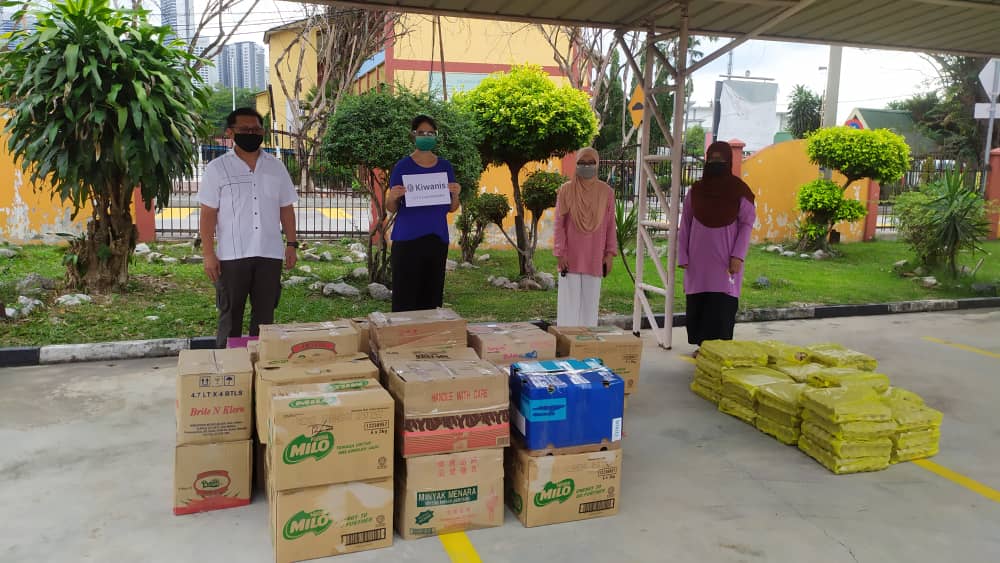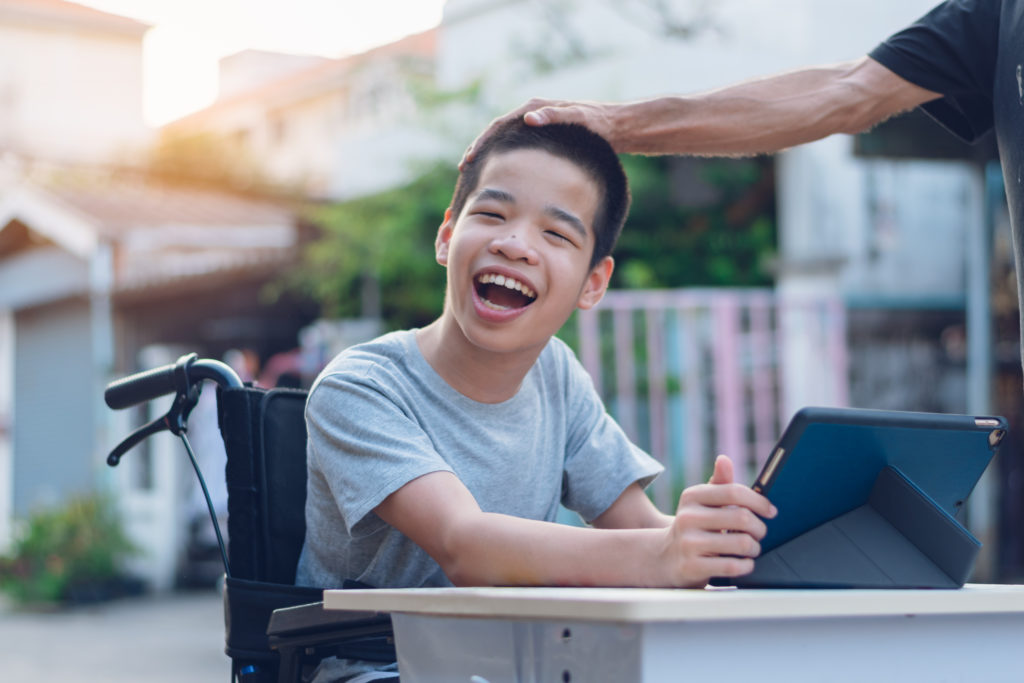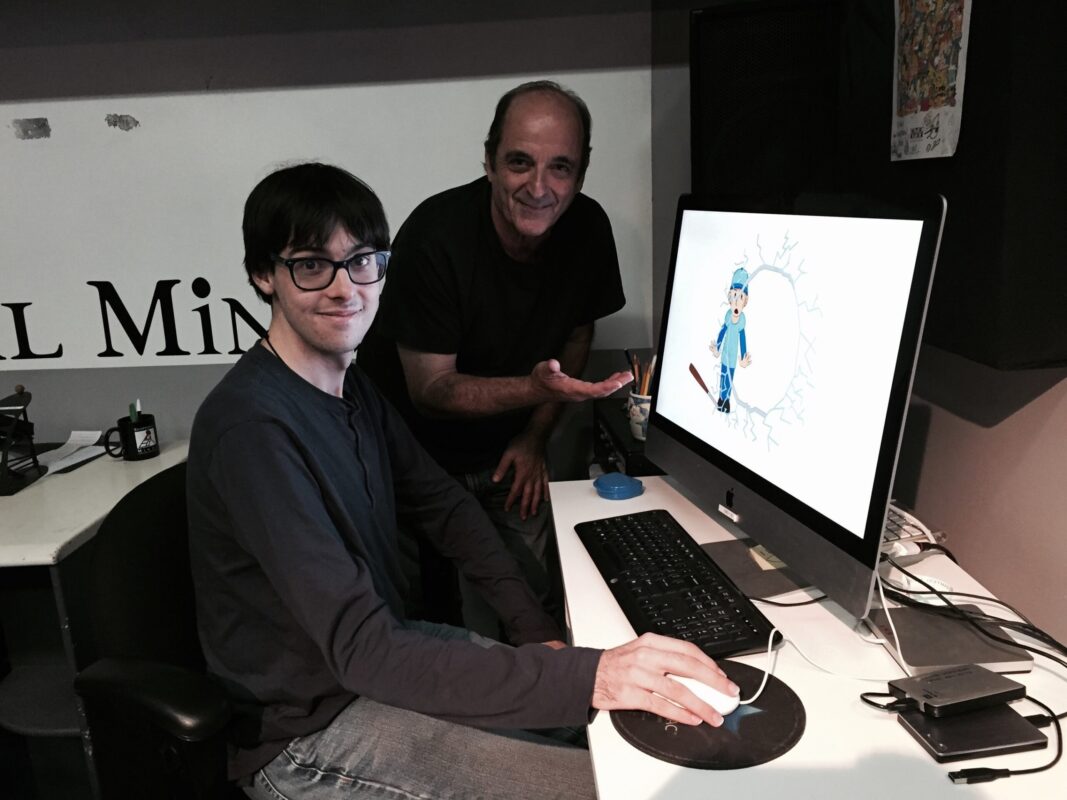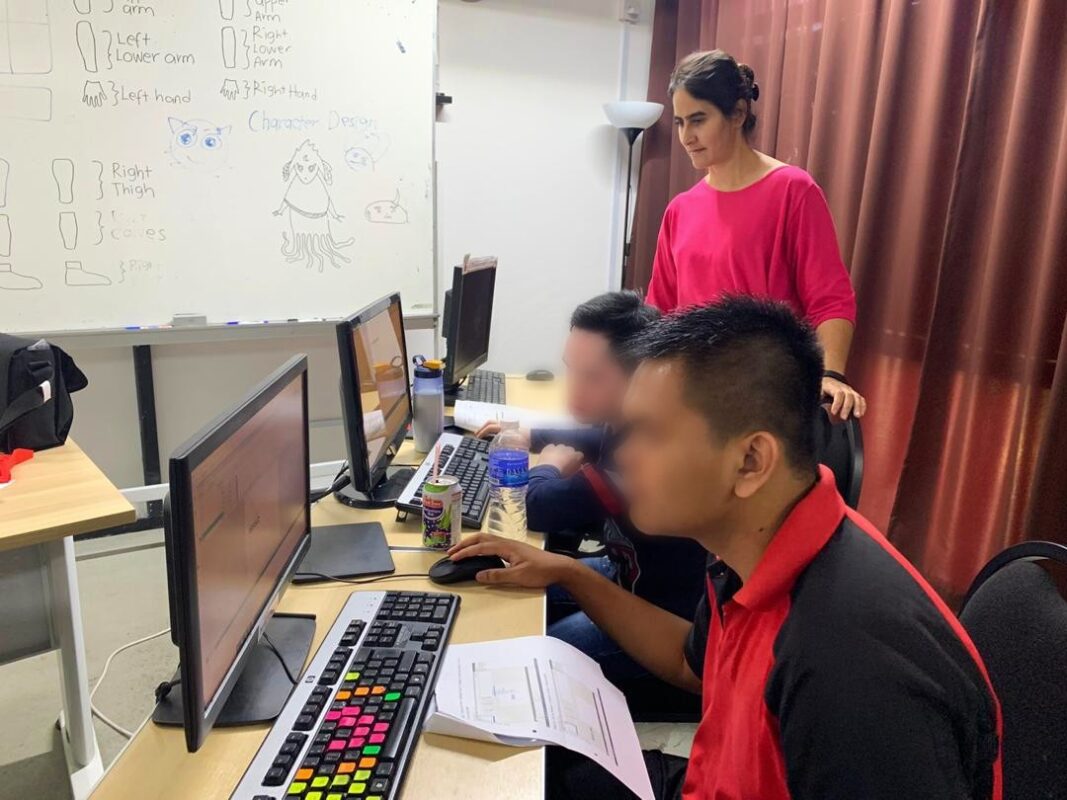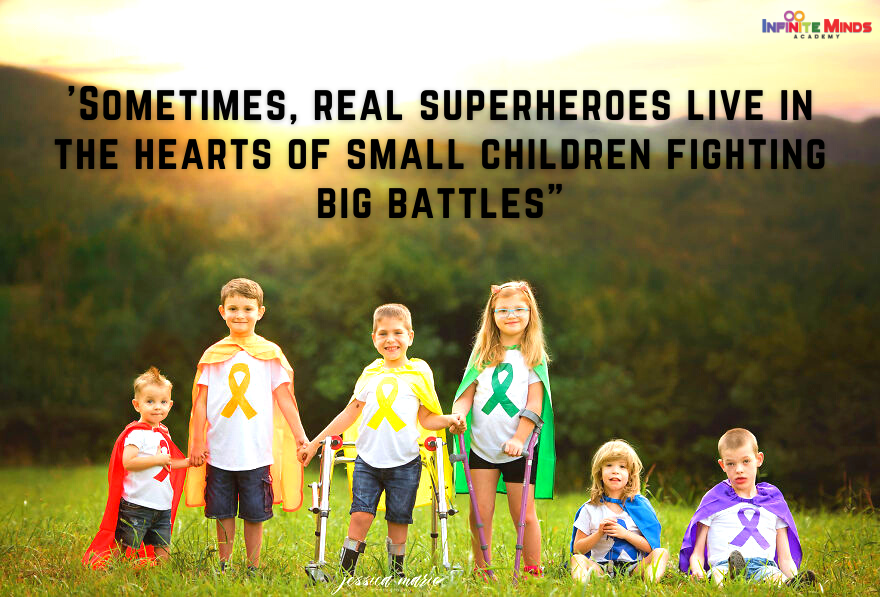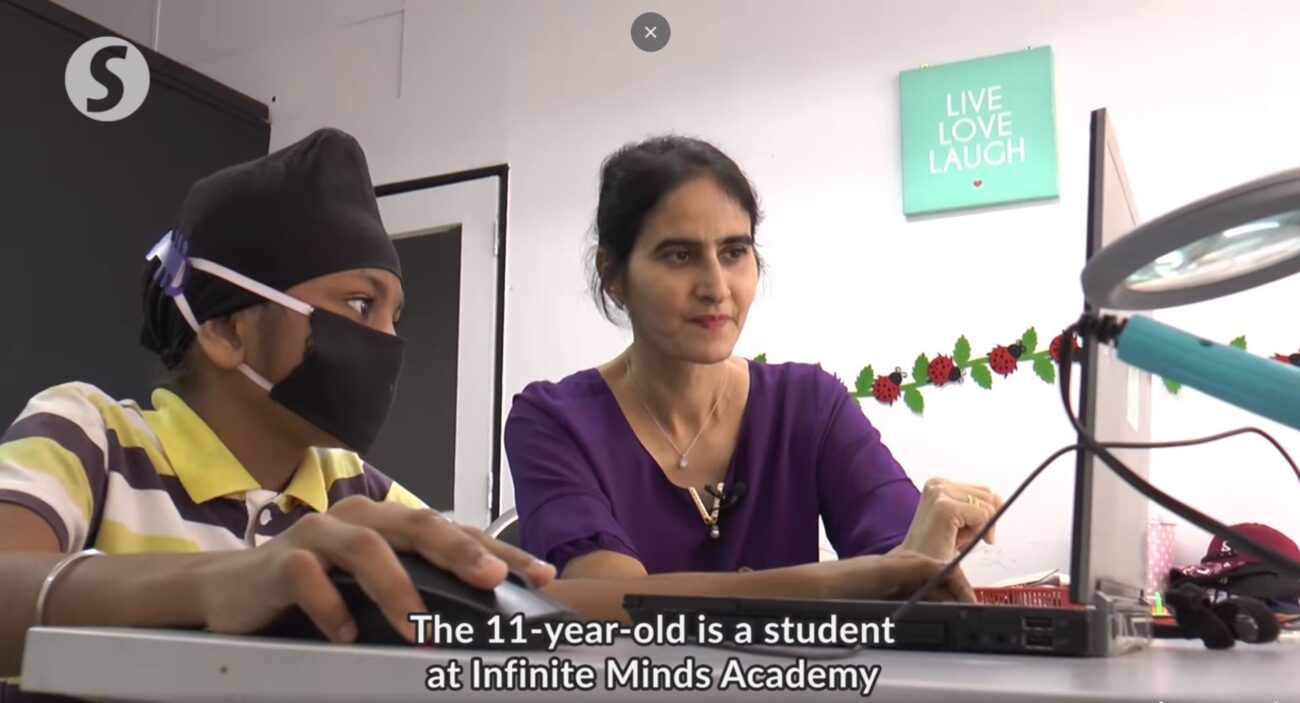Who are the Special Needs people?
Special needs people have various hidden potentials. We only need to tap and identify what exactly their potentials are. Generally, a Special needs person is described as an individual possessing either a physical, mental or emotional disability. It pertains to a variety of conditions such as learning disabilities, for example. Some of these people are fortunate enough to attend public schools that offer a wide range of support programs such as one-on-one teacher aids and occupational therapy.
Their condition is also referred to as being Neuro Diverse. Neurodiversity is an approach to learning and disability that argues diverse neurological conditions are result of normal variations in the human genome.
Individuals with special needs may commonly require assistance with the following:
● Communication
● Self-care
● Movement
● Decision making
Some common classifications of special needs include:
● ADHD
● Autism
● Cerebral Palsy
● Down syndrome
● Dyslexia
● Emotional Disturbance
● Reading disabilities
● Learning disabilities
● Intellectual disabilities
● Pervasive development disorder
● Speech and language impairments
● Visual impairments
Special needs individuals may require special care such as alternative approaches to education. This is done to both accommodate their condition and assist them in working towards increasing their learning and development capacities.
Behavioral Issues
Behavioral issues in children are not usually solved through traditional means of discipline and thus requires parents to be more flexible, patient and creative. Some diagnoses such
as ADHD and dysfunction of sensory integration require specialized strategies in order to decrease the risk of problems that are associated with these diagnoses in a school environment.
Developmental Issues
Developmental disabilities in children have been seen to provide difficulties in their caring and education and has even resulted in children being removed from mainstream classes due to diagnoses such as Down Syndrome. At Infinite Minds Academy, we continually work towards changing this narrative and show that children with special needs possess the capabilities of succeeding just as much as a child without special needs.
Learning Issues
Learning disabilities such as dyslexia and auditory processing disorder (APD) cause children to have difficulty with their school work and this is irrespective of their intellectual capabilities. Such diagnoses require specialised learning strategies in order to meet their potential and avoid any self-esteem issues or behavioral difficulties.
Mental Health Issues
The discovery of mental health issues in children can be unexpected and can take a toll on the family resulting in a roller coaster of mood swings and defiance. It is important that parents make the right decision when it comes to therapy and medications and it is advised that they seek out professional help.
As unique as all children and families are, there are some common concerns faced by most parents such as getting the appropriate care and ensuring acceptance within their extended family, school and community. Parents of special needs children have been seen to be more compassionate, flexible, stubborn and more resilient than other parents, possibly out of necessity.
Although not expected, it is important that parents are doing the best they can and can take comfort in knowing that they are not alone and have institutions such as Infinite Minds Academy that do offer support and are always available should they be comfortable to reach out.

Brief info on Autism, Asperger’s, Down Syndrome, Dyslexia, Cerebral Palsy etc
Asperger’s Syndrome
Aspergers is an autistic disorder most known for its discrepancies between intellectual and social abilities of those affected by it.
It is distinguished from classic autism through less severe symptoms and the absence of language delays. Typically children with Asperger’s disorder are mildly affected and usually have good language and cognitive skills.
It is a pervasive developmental disorder characterized by a hindered understanding of social interactions. Common features of Asperger’s include:
● Uncoordinated motor movements
● Social impairments with extreme egocentricity
● Repetitive routines and rituals
● Limited interests and unusual preoccupation
● Speech and Language peculiarities
● Non verbal communication problems
People with Asperger’s syndrome are known to have fewer facial expressions usually consisting of anger or misery and are seen to be preoccupied and usually ‘in their own world’.
Most individuals affected possess excellent rotary skills and musical abilities. They have intense interests in selected subjects and often go to great lengths when speaking about their favourite subject or topic and may also repeat certain phrases or words multiple times. However, through all of this they still struggle with abstract concepts.
To help with academics, IMA makes use of:
- Modification of assignments
- Tutoring
- Aiding in taking notes
- Previewing of work
- Structured and regulated communication between parents and teachers
- Projects related to students area of interest
- Assistance in gym
- Use of visual aids
- Breaking down homework into small steps
Down Syndrome
Also known as trisomy 21, Down’s syndrome is a chromosomal condition in which extra genetic material causes mental and physical delays in child development. Those affected with Down’s syndrome often share similar physical features such as flat facial profiles, upward slanting eyes, small ears and a protruding tongue. They also often remain shorter and have a slower growth rate as compared to their peers.
It can usually affect learning abilities most notably in mild to moderate intellectual impairments. Children mainly have delays in speech and motor skills and need help with self-care such as grooming and dressing.
Students with Down syndrome may:
● Need to visit the nurse for medications
● Miss classes due to doctors appointments
● Have behavioral issues
● Need visual and auditory accommodation
● Require multiple therapies such as physical, occupational and speech therapies
● Need extra assistance with class work
● Require therapeutic staff support in class
Students living with Down syndrome do have a range of abilities such as learning and developing new skills and may just reach goals at a different pace.
Dyslexia
This is a common learning difficulty that translates into issues with writing, reading and spelling. As it is a specific learning difficulty, it hinders the necessary abilities needed for learning such as reading and writing. It is unlike a learning disability in which intelligence is affected.
Autism
Autism spectrum disorder (ASD), commonly known as autism, refers to a broad range of conditions encompassed by challenges with social skills, speech and non-verbal communication as well as repetitive behaviors.
There are multiple subtypes of autism, most of which are influenced by the combinations of genetic and environmental factors. As autism is described as a spectrum disorder, each person with autism displays a distinct set of strengths and challenges. The spectrum encompasses both highly skilled and severely challenged problem solving abilities which affects the way they learn. Some people with ASD may require more support than others in their daily lives whereas some are incapable of living dependently.

Brief breakdown on Low, Medium and High functioning i.e., what are their abilities? Our focus shall be on Medium and High
Those with ASD usually get further diagnosed as having either ASD level 1, ASD level 2 or ASD level 3.
These levels are determined from the person’s strengths and limitations in regards to communication, adaptability, expanding beyond restricted interest and managing their daily lives. They represent the amount of support needed with level 1 requiring minimal support and level 3 needing a great deal of support.
These three levels allow doctors to make more specific diagnosis as well as it helps those taking care of those with autism and allows for a better understanding of the person’s strengths and weaknesses.
Level 1: Requiring Support (High-functioning)
ASD level 1 is the mildest diagnosis and is usually regarded as the most high functioning form of autism. Usually children with this level have difficulty communicating with others such as not reading social cues and not saying the right thing at the right time. They may have trouble moving on between and from certain activities and may display inflexibility. They may also have low organization and planning skills which can make them less independent as other children their age.
Level 2: Requiring Substantial Support (Medium-functioning)
With ASD level 2, difficulty in verbal and social communication would be more intense compared to those diagnosed with ASD level 1. They also find it difficult to change their focus hence they do not have a lot of interests and rather engage in behaviour that is repetitive. That is why it is also easier for them to communicate and speak in simple sentences.
Level 3: Requiring Very Substantial Support (Low-functioning)
Children with the low-functioning form of autism have the most severe kind of autism. Their behaviours are much more intense as compared to high and medium functioning forms. Verbal and non-verbal communication make it extremely hard to function and interact socially as well as difficulty in changing focus. They also usually engage in repetitive behaviour. Most only respond to very direct social interactions from other people.
Assigning someone to one of the three categories of autism might help you understand how high-functioning or low-functioning they are and what types of assistance and support they would benefit from. It will not, however, be able to foresee or account for subtle differences in their personality and conduct, which will then require highly individualised support and services.
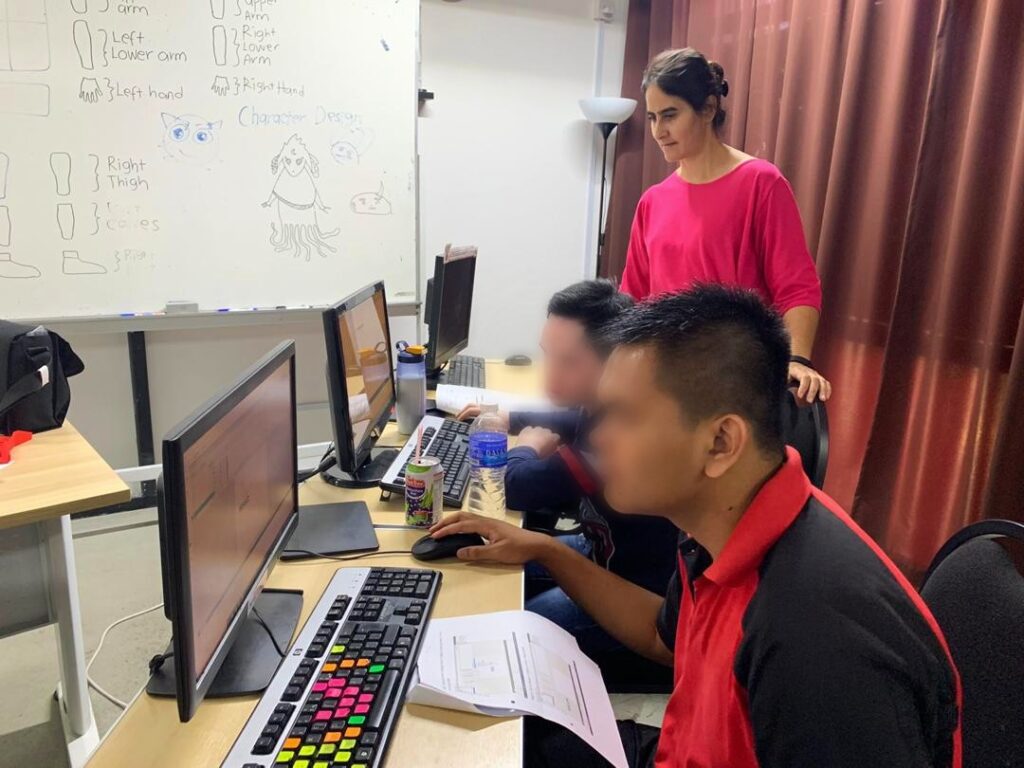
Ability of Special Needs people to pick up Digital Tech Skill
Special needs people have been known to carry untapped talents which are capable of producing great wonders once exposed. Their ability to pick up digital skills is impeccable. However, due to the perceived limitations placed on these people in their communities most are never given fair opportunities and that is why here at Infinite Minds Academy we continue to break that stigma and make sure we enable students with special needs to lead a more self sustainable life in which they no longer have to depend on donations and handouts from the outside world.
It is always our goal to empower our students with digital skills to enable them to make a decent living with full dignity. The whole world is moving towards digitalization and no one should be left behind.
Types of Digital Programs suitable for them
There are different types of digital programs suitable for special needs people. Just to name a few we have:
a. Graphic Design
Graphic design is a profession in which visual content is used to communicate messages through the combination of text and pictures within magazines, books and advertisements. Graphic designers use various mediums to communicate their messages visually representing words, symbols and images.
Design based subjects and skills have been very advantageous as they provide the opportunity for students to enhance their creativity and develop technical skills that allows them to see their ideas become a success. It is particularly good for students with special needs as it allows them to improve the world around them and can help in making that world more accessible to individuals with various requirements.
A significant skill that individuals with special needs often bring to a career in design is many years of experience and practice in making creative techniques and approaches using modern technology in order to navigate through the physical environment and most times actively engaging in community, personal and academic activities.
There are different types of graphic designers, for example:
● Typography
● Web design
● Illustration
● App design
A specialization like the ones listed above gives great advantage as it automatically puts an individual as an in-demand freelancer or team member. It is even more beneficial if the individual is skilled in a variety of these professions as it puts them in higher demand because of their versatility.
b. Animation making
Animation is the creative process in which an illusion of movement is built from the manipulation of figures and images and is usually carried out using computer generated imaging (CGI).
A lot of schools have incorporated animation into their teaching curriculums as stop motion animation which is a very tactile medium that has been excellent in teaching new concepts to students with learning difficulties.
- Promoting Social and Educational Inclusion – Children of varying abilities and disabilities collaborating on animation projects has been beneficial as it allows them to engage more confidently, build relationships and thrive in a positive learning environment.
- Children learn through playing due to the simple and bright technology, children with disabilities can enjoy the fun that comes with animation and is an easy and interactive activity.
- Increases self confidence by enabling the children to carry out their own tasks they can build a sense of empowerment and it also allows them to present their opinions to others.
- Enhances organisational skills – Through the planning and organisation of their ideas, children are able to focus their thoughts onto the planning of scripts, storylines and music which in turn helps in reducing their stress levels.
- Communication – Children can use animation to aid them in communicating with those around them such as other children, parents and their teachers. It also allows them to express themselves and engage with the world outside their classroom.
c. 3D Designing and Printing
3D design is the process of creating an object in three dimensions using computer modelling software. 3D printing, also known as additive manufacturing, is the process of turning a three-dimensional design into a physical object. The 3D design is first sliced into layers and drawn using software that specialises in computer aided designing, and then printed layer by layer by a 3D printer. Usually it is easier and cheaper to use plastic when printing objects using a 3D printer.
Students enjoy the creativity and collaboration aspects of 3D printing. It adds variety as you can create with a range of different shapes and objects at their disposal. At the beginning it usually is challenging identifying features of the app that is being used for 3D design but as time goes on, students start to put in the work confidently.
Using a 3D printer for education purposes helps nurture creativity and spark the student’s imagination. 3D printing requires that students design and print objects of their choice. The ability for a student to see tangible evidence of what they created is beyond inspiring to most students and keeps them engaged. Students in these classrooms can share ideas and build off of each other’s inputs which opens a space for the students with special needs to also learn communication skills and make their skills stronger.
Learning how to communicate successfully is especially crucial for these students because the corporate market has been known to favour creative persons who know how to collaborate with others over those who typically perform repetitive activities in isolated environments. Learning how to operate 3D printers and effectively communicating ideas so that those ideas may be accurately represented require good communication skills, making it a valuable teaching tool for students with special needs.
d. Coding and App development
Coding is the process of instructing a computer to do what you want it to do using a programming language. In Python, for example, each line of code instructs the computer to perform a specific task, and a document containing multiple lines of code is referred to as a script. Each script is created to carry out a specific task. The process of developing an app for usage on tablets, smartphones and other mobile devices is known as app development.
Students with autism have demonstrated an unique ability to debug software due to their superior visual and spatial skills, which allow them to discover flaws in cascading lines of code. Programming can be a therapeutic form of self-expression for students with special needs. They learn how to approach coding challenges and solve them in a variety of methods, which they may apply in the real world.
Teaching children to code gives them control of the computer and allows them to turn their brilliant and creative ideas into reality while grasping concepts like logic and consequences. Simultaneously, abilities learned in programming workshops and coding sessions can be applied to other subjects they learn at school.
People with Asperger’s syndrome can reduce their anxiety when it comes to environmental changes. Error-driven programming is commonly taught, however students may become worried about errors at first. However, with repetition, they eventually become calm and attempt to follow up on the error message, gaining another skill that they can apply in the real world.
Coding skills are in high demand. Coding is increasing in popularity in today’s world. More professions that require computer science abilities are becoming available, and more institutions are attempting to incorporate computer science into their school curricula.
Students with autism are drawn to computer science because computers are logical and consistent. Programming is a process of planning and designing inputs that result in a set of expected outputs. Students with autism appreciate this type of problem-solving because it allows them to use and recognize their capacity to arrange enormous amounts of data and develop predictable structures.
Students are able to use their brains to their best capabilities. They can solve problems and apply skills from their main studies to know what to do in a classroom. They also have the opportunity to be imaginative and creative. They are able to use higher-order cognitive skills while still being able to have fun.

How do we know, which program is suitable for a specific Special Needs person?
A special needs student that takes up interest in drawing and sketching will likely have a higher interest in digital programs like graphic design, animations making and 3D designing and printing.
Students like these typically artistic interests where they prefer work activities that deal with artistic forms, designs, and patterns. They prefer work which allows for self expression. They also have realistic interests where they prefer work activities that include practical, hands-on problems and solutions. Which is work that is a lot more heavy-handed and may include use of physical materials like wood, for example, as well as machinery equipment.
These types of students also have enterprising interests where they prefer work activities that involve starting up and carrying out projects, especially business-wise where they can even lead a well-structured team, make decisions, and take risks when it comes to making profits.
A special needs student that seems to have a more logical thinking ability will likely be a great fit for programming, coding and sometimes keen interest in subjects like electronics principles. They prefer visual reactions to the work they put in and produce.
Logical thinking is a skill that includes applying logic to a problem in order to arrive at a plausible solution. This ability helps a person to accurately analyse a situation, make any data connections, and apply the information acquired to solve an issue. Logical thinking abilities are vital because they can assist you in making key decisions, solving difficulties, coming up with creative ideas, and setting goals which are necessary for an individual’s career advancement.
How do we test them in these programs which can also be used by parents and caregivers to self-test?
As parents and caregivers you are more than welcome to try out self-testing on your children to observe their untapped talents and interests. When it comes to graphic designing, we at IMA first test our students on programs like
Tux by giving them the chance to get their creative juices flowing and to also observe how well they navigate through the app with ease when creating their content. This kind of testing is also done for students with special needs who are also interested in programs like animation making and 3D design and printing.
For students who are more on the logical thinking side, we usually have them play code combat or make a video on the programming and coding they have created to understand whether these are the types of programs that are well suited for them moving forward.
For programs that involve electronic principles and concepts, we carry out testing with programs like Arduino and Raspberry PI. This will determine their interest or lack of interest in the cause and effects of such tech programs.
How these programs will lead to them mentally accepting it and harmonizing it in their daily lives
Learning these digital programs definitely builds confidence in a student as they are also surrounded by like-minded students that are just as passionate when it comes to these digital programs. The skills they develop help them manage better and harmonise well in their mainstream classes. This increases social skills and improves confidence.
7) Having mastered that program, how do we turn them into independent workers or entrepreneurs i.e. not working for anyone due to their inability to work under many circumstances
Having mastered these programs and skills builds individuals with special needs for careers in the future. Their potential is maximised by providing skill sets that are lucrative. With digital tech skills students are able to create their own portfolios that they can advertise when they choose to start working as an independent worker or entrepreneur.
8) Type of Programs conducted by Infinite Minds Academy.. may explain and get info from website and fb
Placing children with special needs in a special needs’ classroom works well if their teachers are well experienced and well trained in teaching special needs children. When the groups are smaller there is more room for teachers and children to work on social and development skills as well as other school related activities.
Infinite Minds Academy conducts Digital Tech programs for the Special needs people, to empower them to obtain the necessary skills and be able to self-sustain themselves economically without having to be dependent on government aids or handouts.
Our programs are specifically structured only for the Special Needs people, namely;
● Animation design – Our animation course will teach you to create your own original movies using professional software just like the pros from Hollywood! Learn how to create animated clips using the same techniques at Disney and Pixar!
● Mobile App Development – students will learn the basics of coding apps and games for smartphones. They will write and code for the first time, develop and design their own unique self-made products.
● Programming – Programming can be fun when taught correctly and a rewarding hobby for kids of all ages. This course is designed so that you can create game apps and mobile apps by yourself!
● Game design – Students are introduced to object-oriented programming and behavior-based logic systems. Our small group size with close guidance from tutors means that students can progress at their own pace and understanding.
● Circuit design – his course provides basic knowledge of electronics to students and gives hands-on experience in electronic components and circuit design. They will learn about PCB design and manufacturing techniques.
● PC Engineering – PC Engineers are specialists in assembling, configuring, and understanding PC hardware and software. They are essential in any company to
ensure all computer systems run smoothly and jobs are widely available in this digital era. ● Microsoft office – Computer skills are valuable and have become an essential skill for every child to have. Most jobs in the future will involve using computer software and this course will teach students how to use Microsoft Office applications suite. e.g., Microsoft Word, Microsoft Excel.
● Internet control – the internet is very popular among children nowadays. They use it to gain knowledge and connect with people from all over the world. Because of this, it is important to learn and understand how to stay safe while using the internet.
Our primary motive is to ensure that these people are able to self-sustain upon acquiring these skills. These people often face difficulties adjusting in the workplace due to their inability to communicate well and also at times due to their appearance and or certain limitations. Infinite Minds Academy encourages self-paced learning according to individual education plans, a one-to-one and small group with a multi-sensory approach.
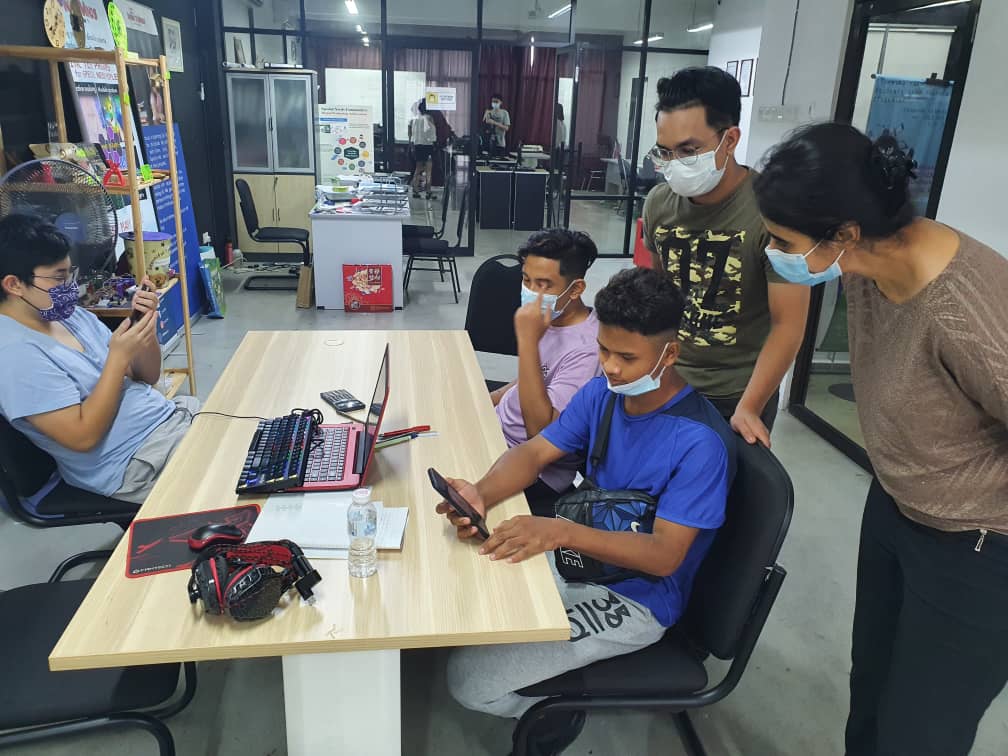
How our programs lead them to become independent / freelance entrepreneurs.
Special needs classrooms offer great support, for example, visual teaching is one of the things that are practiced here at Infinite Minds Academy. This makes learning more interactive for the student and keeps them engaged. The skills children may pick up from these types of classrooms are necessary for their future as they will be able to apply the same skills into real-world settings.
At infinite minds Academy, we try our best to find suitable and efficient methods to connect with our students when teaching and learning. This is usually done through putting more effort and time in making the students understand their lessons and as well as advance to a higher stage of learning. This boosts their confidence and drives them to take greater interest in the work given to them.
Conclusion
In conclusion, empowering students to take up these classes allows their hidden talents to be recognized. Considering achievement is important; seeing results of their work and due to using their strongest abilities. It definitely gives a feeling of empowerment and accomplishment from their work.
Their independence is of great importance as well. Students with special needs are encouraged to make decisions and try out new and different ideas on their own. This enables them to pick out jobs where they can plan their work with little supervision.
Recognition is considered significant as well. Individuals with special needs like to work in jobs which have opportunities for them to be promoted or advanced and be recognized for their work. Jobs preferred are ones in which these individuals are looked up to by others.
Lastly, good working conditions are beneficial and crucial. We are talking about jobs offering steady employment that suits their individual work style and good pay. Mentally, this encourages stability and growth continues gradually in the work environment.




